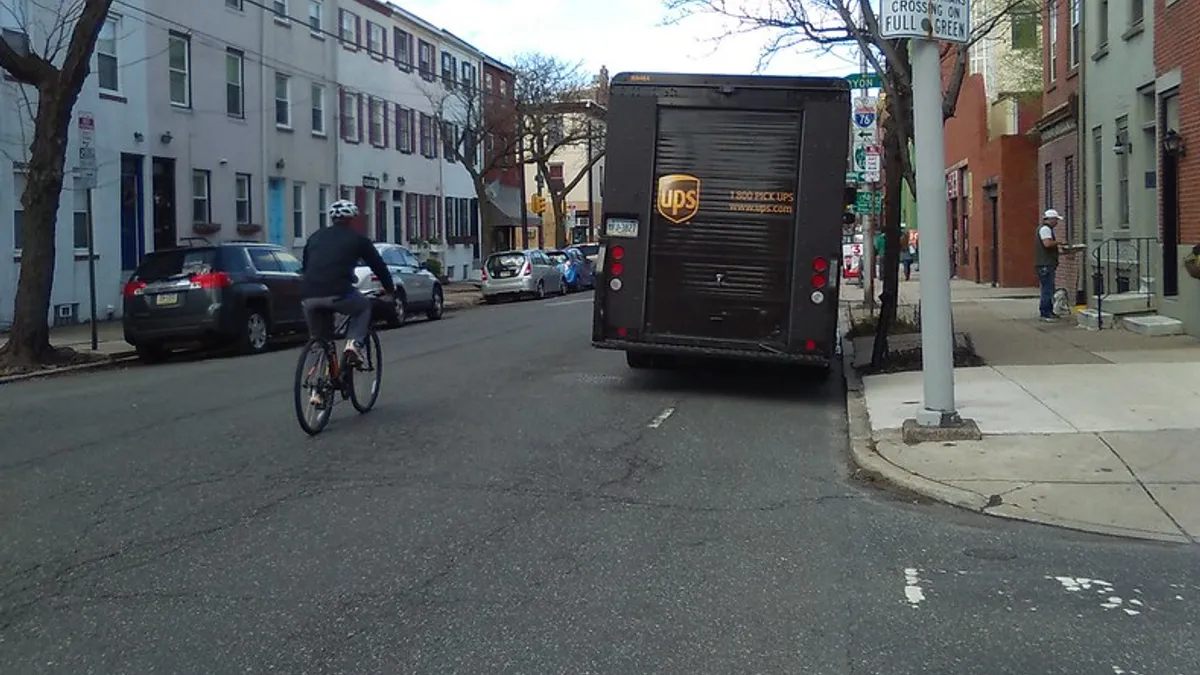Editor's Note: The following is a guest post from Aryan Davani, head of partnerships & policy at Automotus.
Cities across the U.S. are facing immense, unprecedented struggles. Not only has COVID-19 left governments scrambling to manage the unknowable day-to-day impacts of a global pandemic, but it’s also left most cities massively underfunded.
More than 2,100 U.S. cities are expecting major budget shortfalls as a result of reduced tax revenue, record job loss, non-existent tourism and postponed parking enforcement. This could lead to major slashes for essential public services, including public safety, highway and road maintenance, welfare programs and health services.
Simply put, cities are in triage mode and their number one priority is figuring out how to generate revenue to fund the services that residents depend on.
Cities need solutions, and they need them quickly. Some steps that cities are already taking to better manage curb space and adapt their streets or sidewalks to accommodate outdoor dining, shorter-term parking and temporary loading zones can pave the way for a completely new revenue stream: monetizing commercial activity at the curb.
Passenger vehicle revenues are no longer sustainable
For most major cities, metered parking and ticketing are a reliable and crucial source of revenue. In 2016, a Klein on-street parking survey found New York City’s combined annual revenue from tickets and meters reached $1.57 billion — by far the most in the country. (In comparison, metered parking and ticketing revenues in Los Angeles neared $204 million over the same year.)
Right now, passenger vehicles contribute a majority of this revenue stream. But reliance on revenue from passenger vehicles isn’t a sustainable short-term or long-term strategy, especially at a time when every dollar counts.
First, cities have relaxed their typical fines and revenue collection from metered parking, parking tickets and late fees this year due to COVID-19 — and rightfully so, despite the resulting impacts on city budgets. Additionally, new forms of mobility are rapidly taking root in urban areas. According to a global study from Kantar, the world’s largest cities should expect private trips in passenger vehicles to decrease by 10% over the next decade.
Cities such as Baltimore are already building parking revenue reductions into their budgets based on the decline experienced in recent years. In 2016, Baltimore collected over $48 million in overall parking revenue, but their adopted 2020 budget assumes $36.8 million from parking revenue — a 23% decrease. It is clear through this example and others that revenue from passenger vehicle parking and ticketing will become a less reliable source of revenue for cities long-term.
Commercial vehicles: the solution for guaranteeing parking revenue
From the rapid growth in food delivery to increased online shopping access for anything, cities have the opportunity to monetize what will become one of the curb’s primary users: commercial delivery vehicles.
A World Economic Forum report published in January, before the widespread effects of COVID-19 took hold, estimated there will be 36% more delivery vehicles on the road by 2030. Since the pandemic, data we've collected internally in a variety of cities suggests commercial vehicles already make up nearly 30% of parking activity.
Most cities, however, are leaving nearly half the potential revenue from on-street parking and enforcement on the table by not effectively monetizing commercial vehicle use. With research showing more than 50% of parking violations are committed by commercial operators, cities all over the U.S. have significant revenue opportunities on the table. To tap into these opportunities, cities might consider solutions such as charging by the minute in loading zones or automating enforcement for double parking. But in many cases, cities simply don’t know where to start — even though their budgets depend on it.
Cities must first invest in the tools to collect and analyze data on the types of vehicles utilizing their roads. Then, they can begin making quick, data-driven decisions on the kinds of adjustments needed to properly allocate real estate and align policies for both commercial and consumer parking that directly impact revenue.
Monetizing commercial activity is a win for cities, businesses and residents
This kind of innovation doesn’t only mean increased revenue for cities. It’s also a win for commercial operators.
In 2018, for instance, New York City collected $181.5 million in commercial parking fines — a quarter of which was incurred by FedEx and UPS. None of that is tax-deductible, though paying for parking is. It’s ultimately in the operators’ interests to have systems in place that allow for payment upfront versus paying the fines later.
Efforts to monetize commercial vehicles' curb use would also impact operators’ bottom lines through increased safety and efficiency. These efforts pave the path for cities to designate more spaces specifically for commercial vehicles, which will reduce illegal double parking, a major safety hazard and disruptor to the normal flow of traffic.
A recent pilot program conducted in Columbus, OH found that commercial vehicles using loading management zones (LMZs) — areas marked for use by commercial vehicles or private vehicles operating commercially — reduced their time at the curb by 28%, saving two minutes for every pickup and drop off. Data also showed that drivers using LMZs prevented more than 50% of double or illegal parking violations. This means commercial operators could save meaningful time and money in cities with designated zones to park and unload, leading to more on-time deliveries, less time on the road overall and happier drivers.
Finally, it’s a win for cities’ most important constituents: the very residents they serve. Not only do effectively monetized curbs help cities shore up the budget needed to deliver on essential services, but they also create safer, less congested streets for pedestrians, bikers and passenger vehicles.
The path forward is clear. Monetizing growing commercial activity at the curb is a crucial investment for the sustainable revenue cities are desperate for. And most importantly, it can deliver win-win scenarios now for cities and businesses that leave us all safer, healthier and more prepared for a future that better suits our needs.



















